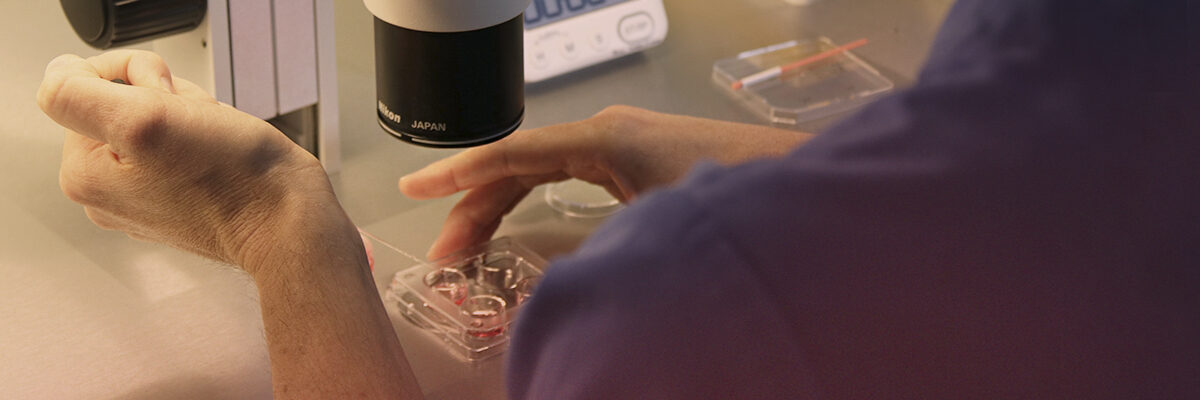EMBRYO ADOPTION. EMBRYO DONATION
A simple, economical reproductive alternative with excellent results in which an embryo is adopted and transferred to the future mother, resulting in pregnancy
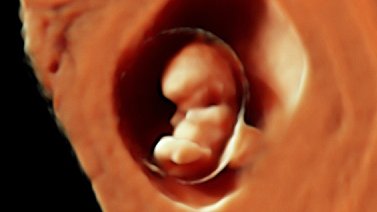
It consists of adopting an embryo -which is the result of fertilising an oocyte with the sperm- that is transferred to the adopting patient uterus in order to achieve pregnancy, giving patients the possibility of enjoying pregnancy, childbirth, breastfeeding and raising the baby.
The embryos are obtained from couples who have undergone assisted reproduction treatment with donated gametes (eggs and sperm) and who, after having had children of their own, decide to donate their frozen embryos and help others to form a family.
As such, whilst every effort is made to assign embryos that are as compatible as possible in terms of blood group, Rh and phenotype, it is not as exact as in dual donation IVF treatment.
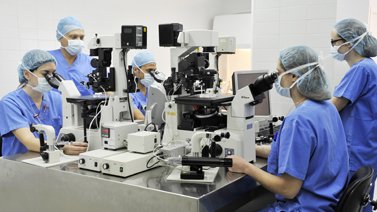
-
When a simpler reproductive treatment is desired.
- When other reproductive treatments have failed.
- In cases of premature ovarian failure, menopause or when the patient does not respond to ovarian stimulation.
- When, for ethical reasons, patients wish to adopt but also want to enjoy the experience of pregnancy, childbirth and nursing.
- It is also an option for women who do not have a male partner or who are in a same-sex relationship.
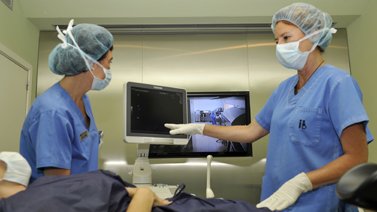
Most embryos for embryo adoption are the result of double donation treatment. It takes around six to eight weeks to complete the course of treatment.
The recipient mother only needs to get ready for endometrial receptivity. The treatment needed in order to prepare the mother’s uterus is very simple and involves administration of some oral tablets or oestrogen patches up until transfer, followed by vaginal progesterone tablets. The procedure usually only requires an ultrasound scan beforehand and this decreases both the number of necessary appointments and the cost.
Advantages of embryo adoption or embryodonation
The economic cost is lower. Another advantage is that the medication required is smaller. The recipient mother only requires an adequate endometrial preparation in order to proceed with the transfer. The treatment is very simple and convenient, consisting of transdermal estrogen patches or capsules, which are taken orally, and vaginal progesterone tablets (this medication must be maintained for the first few weeks after achieving gestation).
The transfer of a single embryo minimizes the possibility of multiple pregnancies and the risks involved for the mother-to-be.
Blastocyst transfer
The embryo transfer is always performed when the embryo has reached the blastocyst stage (day 5-6 of development), so its nesting capacity will always be higher than that of embryos in previous days.
Safety controls
When the donated embryos come from other couple’s assisted reproduction treatments, we can be rest assured that they have previously undergone all the controls indicated by the main scientific societies (ESHRE -European Society of Human Reproduction- and the SEF -Spanish Fertility Society-).
When the embryos come from gamete donation (eggs and sperm), they have the security and peace of mind of the rigor to which all our gamete donors are subjected before being accepted:
- Strict gynecological, physical and health controls (personal and family history of neurological and psychiatric diseases, endocrinological, digestive, oncological, blood pathologies, etc. are ruled out).
- Psychological control by a clinical psychologist in which their social and psychological development is assessed.
- Screening for genetic and infectious diseases:
- When required, TCG: analysis of the 600 or 3000 most common hereditary diseases, depending on the modality.
- Karyotype, cystic fibrosis, thalassemia, fragile X, muscular spinal atrophy and nonsyndromic hearing loss (GJB2)
- Sexually transmitted diseases and serology.
In donated gametes embryo adoption treatment, Instituto Bernabeu keeps the gamete donor’s DNA for 20 years. This is very useful in case future genetic analyses are necessary in the event of offspring possible disease.
Simpler and more effective treatment for patients with reproductive problems
In many cases it is an opportunity for a woman to become a mother if she suffers from pathologies such as premature ovarian failure, menopause or no response to ovarian stimulation; also in cases of male fertility. It is also an option for women who want to face motherhood alone, lesbian couples, and women who wish to adopt and at the same time enjoy the whole process of pregnancy.
Process

1 day
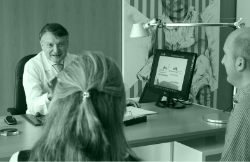
FIRST VISIT
Each patient is unique, therefore, each treatment is individualized. In this first consultation we will get to know the particularities of the case, examining and medically evaluating the needs and causes of the reproductive problem. Once these have been interpreted, the most appropriate treatment option will be validated.
It is very important you are provided with detailed information about those aspects regarding donors, both as regards to legislation and the required selection process to accept candidates as donors. Fortunately, legislation in Spain is clear, and it offers a legal security framework allowing treatments to be carried out in a simple way.
In order to face the different emotional stages which comes with the reproductive process, we offer you, on a voluntary basis and free of charge, an appointment with our specialised clinical psychologist.

15/35 days
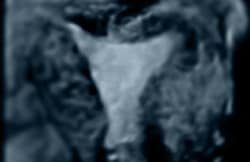
PREPARING THE ENDOMETRIAL CAVITY TO RECEIVE THE EMBRYO
The endometrium is the uterus “layer” where the embryo attaches and subsequently implants so that pregnancy can take place.
Two to three weeks before the embryo transfer, we will begin the preparation of the recipient mother endometrial cavity: oestrogen is started, either through intradermal patches or pills, and it is regulated until the endometrial wall thickens for embryo reception. Ultrasound monitoring is usually necessary to check the correct developing of the embryo and to modify the medical regimen dosage if necessary. When the time for transfer approaches, the doctor will indicate the application of progesterone vaginal tablets.
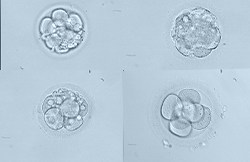

5 days later
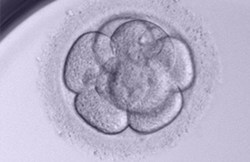
EMBRYO TRANSFER
The embryo transfer is performed. This is an essential part of the treatment. It consists of placing the embryo in the mother’s uterus.
It is performed under abdominal ultrasound control. The culture medium containing the embryo is placed inside the uterus. It is a painless and brief process.
The environment is a special one that takes into account how delicate the embryo is.

10/12 days later
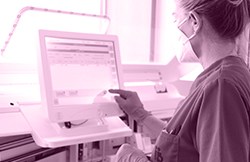
PREGNANCY VERIFICATION TEST
13/14 days after the onset of progesterone, we will schedule the pregnancy confirmation test: it is the determination in the blood of the levels of a hormone called beta-hCG, which is produced by the embryo and passed to the mother. This is the first measurable signal sent by the embryo.
If the patient is not pregnant, the medical team involved in the course of treatment assesses the causes and decides what steps need to be taken. The patient is given an appointment in order to be able to tell her about the team’s evaluation of the situation.

15 days later
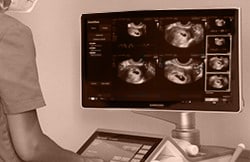
Pregnancy follow-up ultrasound scan
After the positive pregnancy test, an ultrasound scan will be performed after approximately two weeks. Performing it earlier can create confusion and uncertainty as in most cases the result is inconclusive.
How to donate your embryos?
According to Spanish law, when a patient has cryopreserved pre-embryos which she’s not going to use for her own purpose, she can decide on four different possible destinations. One of them is donate them for reproductive purposes to other patients. This requires only “the corresponding duly accredited informed consent”.
It should be noted that, although Spanish legislation does not mention an age limit for the oocyte (at the time embryos are generated), in practice, the woman’s age should not exceed 35 years of age.
SUCCESS RATE STATISTICS FOR EMBRYO DONATION (ADOPTION OF A BLASTOCYST) AT INSTITUTO BERNABEU 2023
Embryo donation in blastocyst stage | Success rate |
|
Percentage of pregnancies achieved after adopted frozen embryo treatment | 54,1% |
|
